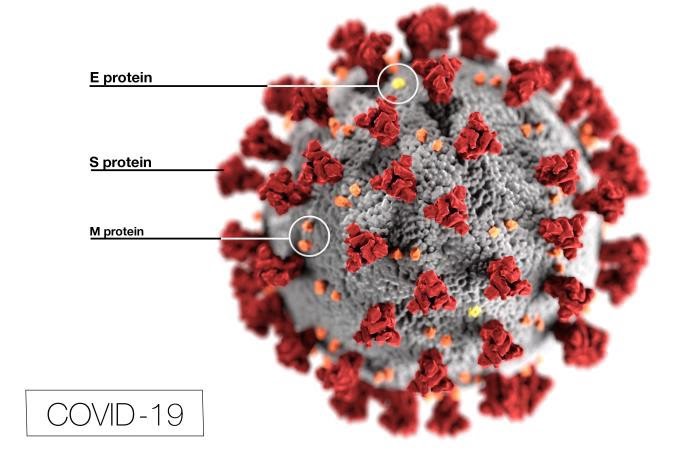The illustration visualizes how the virus infects people
Image credit: CDC/Alissa Eckert and Dan Higgins
What the Coronavirus Image You’ve Seen a Million Times Really Shows
The illustration visualizes how the virus infects people
A colorful 3D rendering of a spiky fuzzball has spread around the world at least as fast as the coronavirus. The image, used by news media around the world, was created by Alissa Eckert, a medical illustrator at the U.S. Centers for Disease Control and Prevention (CDC), along with her colleague Dan Higgins.
It is not a photograph, but rather an illustrated visualization of the microscopic coronavirus.
“The image was originally designed with the public in mind,” Eckert tells Elemental. “However, it also serves to help researchers differentiate and visualize their information. Creating visual representations of diseases provides a way to take something complex and abstract and make it tangible through visualization.”
Viruses like SARS-CoV-2, the coronavirus that causes Covid-19 disease, are not technically living things, and they can’t reproduce on their own. They invade cells in the bodies of animals, including humans, and take over — making people sick. The hijacked host cells then reproduce the virus. We may feel sick for two reasons: The virus can disrupt the normal function of our cells or destroy them; and our immune system springs into action, causing symptoms such as a fever, intended to kill the virus with heat.
The 3D rendering of the novel coronavirus uses vibrant colors that are not what would appear if you could see the virus with your own eyes, but here’s what the image reveals:
 The gray surface is a spherical envelope that surrounds the nucleus of the virus, containing genetic material.
The gray surface is a spherical envelope that surrounds the nucleus of the virus, containing genetic material.
Orange bits are a “membrane proteins,” or M proteins, the most abundant structural protein in the virus and one that gives it form, says Eckert. These and other proteins vary from one type of virus to another, and can be used to help understand or identify one virus from another.
Yellow bits are envelope proteins (E proteins), the smallest of the structural proteins. They “play an important role either in regulating virus replication — such as virus entry — assembly and release,” according to other research.
Red spikes: These clumps of proteins (called S proteins) are “what the virus uses to gain entry into and attach to the cell,” says Eckert. They also create the effect of a halo, or corona, around the virus.
The red spikes latch onto human cells and cause the membrane of the virus to fuse with the membrane of the human cell. The genes from the coronavirus can then enter the host cell and be copied.
The red spikes of the new coronavirus are “10 to 20 times more likely to bind” to human cells than the spike from the 2002 SARS coronavirus, researchers have found. “This may enable SARS-CoV-2 to spread more easily from person to person than the earlier virus, they conclude.
“Working with the virus as a three-dimensional structure allows you the freedom to interact with the structure and manipulate and design it as needed to convey the message,” Eckert says. “One goal is that through this visualization we can help inform and educate the public about the disease, and thus hopefully help improve public health by limiting and halting the spread of disease.”
Scientists are using the 3D rendering and many other different images and troves of genetic data to study the virus.
Earlier this year, scientists in China publicly released the genome sequence of the new coronavirus. Scientists at the National Institutes of Health and elsewhere are using that information, along with electron-microscope imagery and other data to develop a potential vaccine, which officials say is likely months away.
“We hope these findings will aid in the design of candidate vaccines and the development of treatments for Covid-19,” says Dr. Barney Graham, deputy director of the Vaccine Research Center at the National Institute of Allergy and Infectious Diseases.
The coronavirus outbreak is rapidly evolving. To stay informed, check the U.S. Centers for Disease Control and Prevention as well as your local health department for updates. If you’re feeling emotionally overwhelmed, reach out to the Crisis Text Line.
